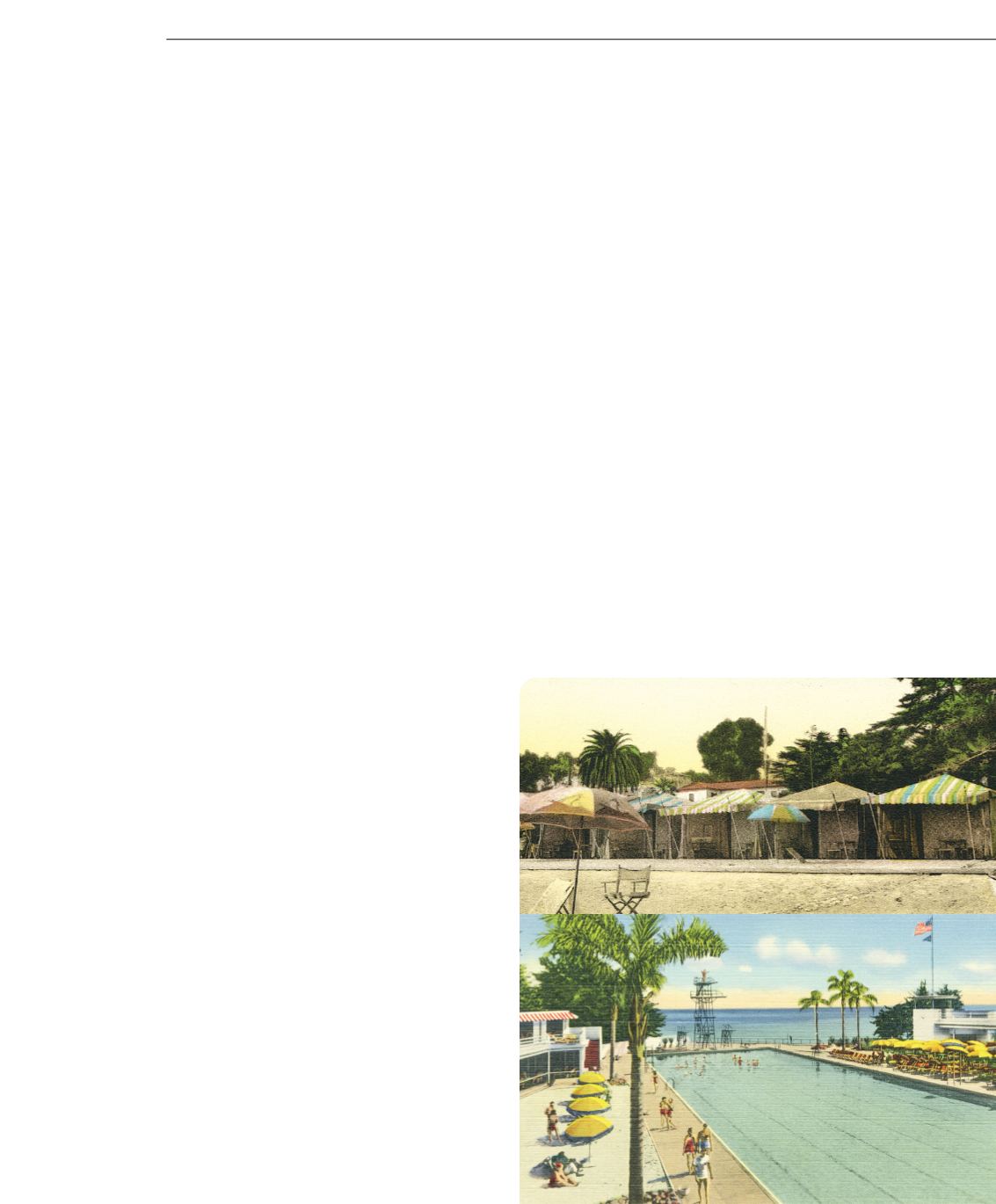
110
summer
|
fall
In 1944, the Biltmore became one of three local hotels
requisitioned by the government as lodgings for servicemen stationed
at the Army Air Corps redistribution station based in Santa Barbara.
The Biltmore ballroom was given over to Bingo parties, the Coral
Casino hosted tea dances, and radio stars and jazz bands entertained
on the Biltmore stage. When the hotel returned to civilian duty, a
thorough renovation was required.
The Biltmore steadfastly tried to uphold its standards in post-war
America. The “Appropriate Dress” bulletin of 1950 remarked, “Part of
The Biltmore’s charm is its dignified atmosphere of the true sense of
the word. You will be correctly attired at all times by following these
suggestions.” These “suggestions” allowed Bermuda shorts or Capri
ensembles for women at breakfast, but men had to wear jackets. At
lunch, ladies had to wear skirts and men could wear sports jackets.
At dinner, ladies were encouraged to wear cocktail suits or dresses,
but sport coats were not acceptable in the evening for gentlemen. The
bulletin also said, “If you prefer more informality, may we suggest you
call Room Service.”
The rate sheet for August 1950 listed double rooms on the
modified American Plan (breakfast and dinner) from $23 to $45,
and Cottages from $28 to $45. For an additional $11.50 per
The Biltmore provided for every need the traveler might have.
For the ladies, I. Magnin opened a clothing store, and there was a
jewelry and shoe store and a beauty parlor, as well. For the business
traveler, there was a public stenographer, a valet, a barbershop, a
Western Union Telegraph office, a newsstand, and public telephones.
And Harold Chase, of course, had a realty office on site. Combine all
that with its award-winning restaurant, ballroom, and beach cabanas,
and one never needed to make the long journey into plebian Santa
Barbara.
In February 1928, the Architectural League of New York awarded
the Silver Medal in Architecture for General Works to Reginald
Johnson, the first time the League had awarded a prize to a California
project or architect.
The Tides of Change
T
hen on October 29, 1929, the world came tumbling down.
The Biltmore stayed open despite staggering financial losses.
Bowman died in 1931 but others struggled on. In November 1936, it
all came to an end. Bowman’s nine-year-old Biltmore, which had cost
$2 million to build, was sold at a bankruptcy auction.
Robert S. O'Dell, a real estate investor who had purchased the
Clift and Plaza hotels in San Francisco and the Coral Beach Club
in Florida, acquired the Santa Barbara Biltmore for $476,000. He
continued the tradition of superior service and amenities and initiated
an advertising campaign to regain the old clientele and entice new
guests. He intended to capitalize on America’s fascination with the rich
and famous. Soon, Hollywood stars were mingling with foreign royalty
and what remained of the wealthy socialites.
O’Dell brought in one of Santa Barbara’s premier landscape
architects, Lockwood de Forest Jr., to oversee changes to the landscape
design. In 1936/37,
Gull Cottage
was razed to make room for a new
modern beach club named the Coral Casino Beach and Cabaña Club.
O’Dell also arranged access for his guests to La Cumbre and Montecito
Country clubs, two polo fields, horseback riding, swimming at the new
Coral Casino, and boating excursions aboard the Coral Casino’s own
ocean cruiser.
Landmarks


